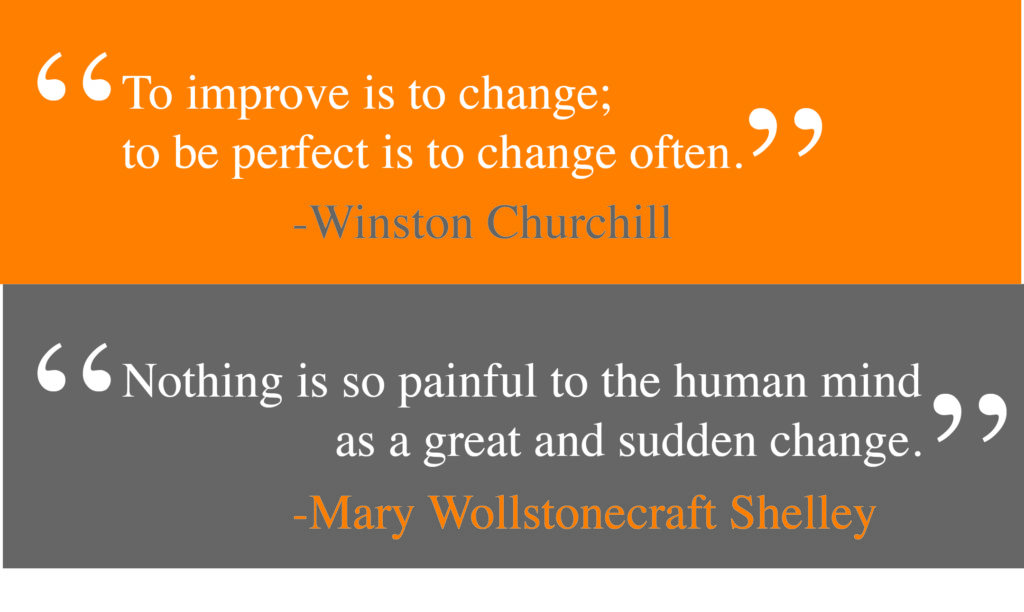 Change is a good thing, right? We’re constantly told how important it is to be able to adapt as individuals and as organizations. As Darwin said, “It is not the strongest of the species that survive, nor the most intelligent, but the one most responsive to change.”
Change is a good thing, right? We’re constantly told how important it is to be able to adapt as individuals and as organizations. As Darwin said, “It is not the strongest of the species that survive, nor the most intelligent, but the one most responsive to change.”
But what very few talk about is how taxing change can be. Just ask the child of divorced parents, an Army brat who has lived in six states in 10 years, or an employee who works at an ever-changing organization.
In fact, we frequently hear from people who want to leave their jobs because there is simply too much change going on. Sometimes the dissatisfaction stems from new leadership/repeated management changes, while other times it involves a new strategy du jour or frequent changes to the organizational chart.
Here are some of the comments we’ve heard from employees in the recent past that illustrate the frustration with constant change:
- “Change is so much easier when you’re in the conductor’s seat. But things are a bit bumpier in the caboose of the train. If you change directions all the time, it’s like playing crack the whip — eventually no one is left hanging on.”
- “I understand we have to keep relevant, but could we try something new and do the same thing two times in a row?”
- “It’s ironic that we’re trying something ‘new’ that we figured out didn’t work several years ago! I’m one of the only people still around though, so nobody else understands that.”
- “The lack of consistency makes it difficult to pinpoint expectations and get anything meaningful accomplished. It’s no surprise we’ve had so much turnover.”
So, what’s a nonprofit leader to do if change must be implemented? Here are four things to keep in mind:
- Get buy-in from staff before the change is implemented. If possible, bring employees into the conversation well before the change is executed. Employees will have the opportunity to educate management about how the change will affect them and their performance. This allows management to mitigate potential problems and ensure a smoother adaptation.
- Explain why the change is occurring and how it will improve the organization. Employees are much more likely to welcome change if they understand why it’s happening (“because management said so” is not a sufficient explanation) and if they can envision how things will be better after the fact.
- Communicate, communicate, communicate. Employees yearn for stability when they are surrounded by change. Don’t leave them confused or feeling alone. Communicate with them at every step along the way about what to expect as the change is implemented and acknowledge that change is hard. Finally, make sure to have an open door policy that allows employees to share concerns or problems related to the transformation.
- Don’t change everything at once. If you know the organization has several big changes coming down the pike, try to stagger them. A nonprofit executive recently told me that he has plans for a new leadership hire, but that he is holding off until the dust settles from a recent staff change. In his words, “My staff has been through a lot lately. I want to give them a break before throwing more change at them.” (And that’s one of the many reasons he’s a successful leader!)
And if you’re not a nonprofit leader, but rather on the receiving end of a change deluge, hang in there! If leadership hasn’t communicated with staff about the changes, perhaps you can ask for clarification on the how and why. Don’t forget to encourage them to share these same details with the entire staff.
If you don’t feel comfortable doing that, perhaps a copy of this article can mysteriously find its way under your boss’ door?




